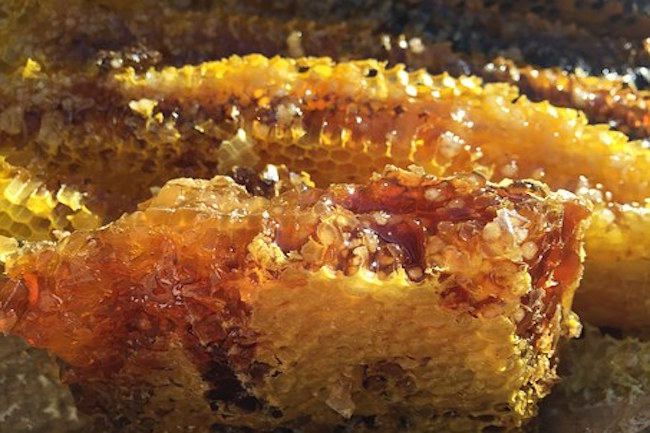Honey: The Old-Fashioned Wound Treatment That Still Works Today by: Rebekah White for Off The Grid News
Honey is a homesteader’s dream. Produced as a necessary byproduct of a honey bee colony’s pollination of your precious plants, honey is a fantastic addition to a meal or beverage (or—and we know you do it—for eating right out of the jar). But did you know that honey also can save your life?
Since 50 A.D. (and possibly even earlier), honey has been utilized as a powerful healing agent. Historians track one of the first uses to the Greek physician Dioscorides as a treatment for sunburn and inflamed wounds. Even the Bible references honey’s mystical healing properties.
Honey has powerful wound care capabilities that enable the quick, efficient healing of skin damage and infection. Whether you accidentally burned yourself, have ulcers, or even hosting a small bacterial infection, that delicious jar of honey might be your savior.
Various studies have proven that honey, when used as a topical ointment, not only clears infections but also prevents wounds from spreading infections. Scarring is dramatically reduced, and honey can help remove some of the odors associated with healing wounds. Honey’s anti-inflammatory properties also help to reduce pain.
Not without its faults, honey can become contaminated with germs from plants and bees, as well as during collection and processing. Some bacteria, such as the bacterium that causes botulism, can remain despite honey’s powerful properties, so it’s wise to use honey collected from a germ-free hive that has not been treated with antibiotics. Don’t use honey for wound treatment if it was collected in an area that contains plants treated with pesticides. Although most raw, natural honeys are suitable for use as wound treatment, there are commercial products available to mitigate any risk. Medihoney, a store-bought filtered honey, is an example of an available product that has been treated by gamma-irradiation to reduce the likelihood of contamination.
However, untreated raw honey has such strong germ-fighting properties that most contamination cannot survive. In fact, honey is effective against many antibiotic-resistant strains of bacteria. These antibacterial properties include the ability of honey to release low levels of hydrogen peroxide (the quantity depending, of course, on the type of honey used). It has even been used as a prophylactic for patients liable to contract MRSA or other antibiotic-resistant strains of bacteria. It has been reported to inhibit over 60 different types of bacteria, as well as some fungi.
The effectiveness of honey as a topical treatment will vary based on its source. Although any type of honey contains strong antibacterial properties, many physicians argue that Manuka honey or medical grade honey work best at treating infection. Manuka honey is the only variety of honey approved by the United States Federal Drug Administration as a recommended option for wound treatment.




